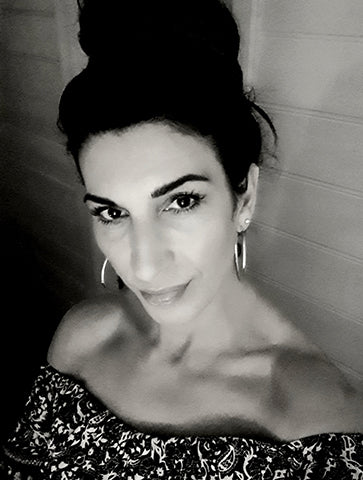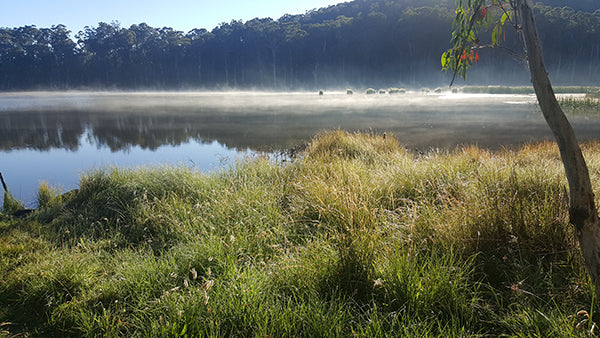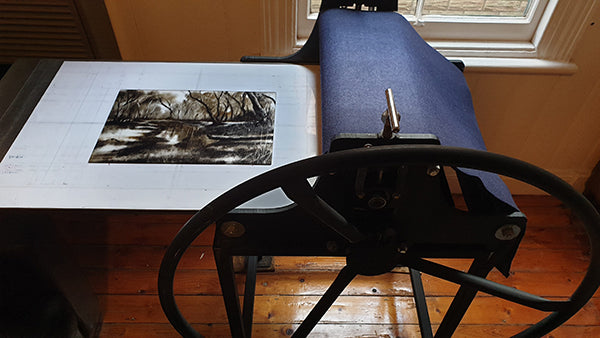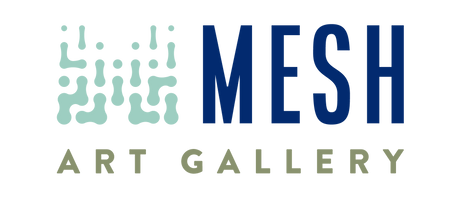Marketa Kemp Monotypes: from Creativity to Expression
How and when did you decide to become an artist?
I cannot really say I ever made the conscious decision to be an artist. I think I have always been interested in ‘creativity’ in various forms, but more as a past time. I know the time when I become serious about making art was in 2015 when I travelled to Paros (Greece) to undertake a course in watercolor at The Aegean Center for The Fine Arts. This is where my passion for art was truly awakened, and I have not stopped making art ever since.

What are your other interests?
I love hiking. Camping is fine, but to get up to the top of a mountain, where one can only get on foot, brings this unexplainable contentment and happiness. It’s the true feeling of ‘being at one with nature’. Perhaps this is one of the reasons why my art is mostly nature inspired. I’m also a bit of a gym addict, and not afraid to admit it!

Do you have any artists that you find inspiring? It can be someone you learned from, are friends with, or admire.
There are many, each for different reason. I have a huge admiration for Frida Kahlo. Not only for her art but also her strength, passion and persistence in going after her goals, not only in art but in life. The Old Masters, Rembrandt, Edgar Degas are my greatest role models. From the contemporary artists I find Godwin Bradbeer (with whom I met and have done several workshops) very inspiring. Wayne Viney who taught me printmaking will always be one of the artists I look up to.

As you described in your "About" from your website, you were drawn to printmaking because you enjoy the "random imperfection, unpredictability and surprise [of] the process". Why is this important to you and your artistic expression?
I feel it infuses the artwork with so much freedom. For me it is particularly important as I naturally tend to be a little bit of a perfectionist. To strive for perfection in art can sometimes be limiting and inhibiting, and I know I can be somewhat prone to it. The unpredictability I find in monotype printmaking loosens my approach and creates artwork that is organic and often open to interpretation.
The Australian landscape is often captured in your artwork. What makes Australia special to you in comparison to the other places you have travelled and lived?
Australia has been my home for almost twenty-four years, and I feel deeply connected to its landscape. In my work I try to capture the emotion and how the landscape makes me feel, rather than to replicate the exact vista. Australian landscape is where I find such emotions to be the strongest. There are many amazing places in the world though, which I would and have used in my art; that’s especially true for the island of Paros in Greece, and naturally the city where I was born which is Prague in the Czech Republic.

In terms of your community, do you surround yourself with other creative people/other artists? How would you describe the community that you are a part of?
Yes, absolutely. I go to life drawing sessions when I can and have formed some close friendships there over the years. I am also in regular contact with several artists, with whom we exchange tips, ideas and artistic opportunities; or sometimes just catch up for a drink and chat. When I’m working though, I like to be alone…

How has your artistic practice changed over time?
I started primarily as a painter. But since I discovered printmaking and ink my practice has slowly moved towards creating works on paper.

Describe creating a monotype. For example, do you work on one piece at a time or do you have multiple pieces in process at once? Do you sketch in the landscape first and then create in your studio? What time of day are you post productive? Do you work in small bursts or steadily over time?
For me a monotype requires a full day. I will start mid-morning and often continue well into the night. I usually sketch the landscape first before rolling out ink. When using a specific geographical location for a reference I often use a photograph and blur it out to remove the detail, which allows me to focus on the light and shadow rather than being too specific with the detail to begin with.

The first layer of the monotype is generally the background, water, sky and the clouds. I will create this image on the plate in various tones and roll it through the etching press to print it. I will spend more time on the second layer and paint the actual landscape on a clean plate, then print it on the same sheet of paper. I often use random tools such as toothpicks, sponges, old cut up credit cards, toothbrushes, cotton buds etc. I find that these create interesting textures. Sometimes I return to the monoprint once it has dried and scratch into in with a scalpel for more texture.... the process can go on forever. But I generally work on one piece at a time.


